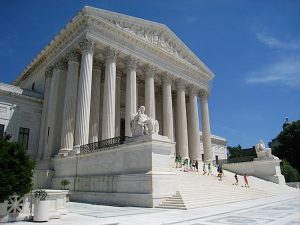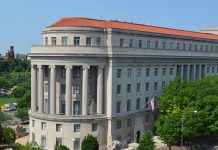In a case that could roll back protections for more than 50% of the nation's wetlands and thousands of other federally regulated bodies of water, the Supreme Court opened its new session by hearing oral arguments on Sackett v. EPA. The case challenges a definition at the heart of the Clean Water Act, the landmark 1972 law preventing the discharge of hazardous substances – from oil and chemicals to rock and sand – into the "navigable waters of the United States." At question is what is actually meant by “waters of the United States.”
The lawsuit was originally filed way back in 2007 by a couple in northern Idaho who began filling in with sand and gravel a soggy lot they had bought by a lake in order to build a new home. However, the Environmental Protection Agency (EPA) and Army Corps of Engineers informed the couple that the land may be subject to Clean Water Act protections because it contained a wetland, and thus construction was halted.
The phrase "Waters of the United States," popularly known as WOTUS, has historically been interpreted by the EPA to mean any body of water that may exert a significant influence on a larger water source. That has included not just major rivers that flow year round, but marshland and "ephemeral" streams, in which water flows for just part of the year. Roughly 59% of the country’s streams are ephemeral, and they are especially important in the western United States, where water supplies are already limited.
In 2006, the Supreme Court was divided in Rapanos v. United States, with justices split 4-1-4 over how to define the scope of the Clean Water Act's protections. That particular suit was brought by a developer who wanted to build a mall on top of a wetland in central Michigan. The definition of WOTUS has been up in the air ever since and has often become fodder for additional lawsuits and political partisanship.
The Sacketts’ attorney, Damien Schiff, claimed that his clients' property should not be subject to federal protections, arguing factually that its waters do not directly empty into a larger body of water. However, Justice Ketanji Brown Jackson, who has officially replaced Justice Stephen Breyer and is the court's newest addition, emphasized that such reasoning does not align with Congress' goal of protecting "traditional navigable waters." Justice Jackson pointed out that navigable waters may be substantially impacted by wetlands even if those wetlands are not visibly connected to the larger water source.
In an unexpected twist, some of the court's conservative justices also appeared skeptical of Schiff’s argument. For instance, Justice Brett Kavanaugh asked Schiff why seven different presidential administrations had not agreed with his proposed definition of WOTUS.
The Supreme Court, with its new conservative supermajority, has faced criticism from environmentalists for agreeing to hear the Sackett's case before the EPA publishes its official definition of WOTUS, which the Biden administration set out last year to revise when it recognized the challenge associated with the Clean Water Act's vague language, and the likelihood that other legal suits would arise in the future.
The court will not issue its final decision on the case until next year.






















